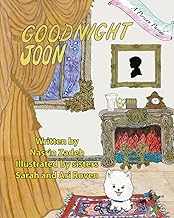Summary of "Parsi Theatre -1"
Summary of “Parsi Theatre -1”
This lecture explores the Parsi Theatre tradition in India, highlighting its foundational role in shaping modern Indian performance culture. Originating in the mid-19th century, Parsi Theatre companies pioneered a unique theatrical genre that blended Western theatrical influences with Indian storytelling, particularly drawing from Persian legends and oral traditions.
Key Artistic Techniques, Concepts, and Creative Processes
Origins and Historical Context
- The first Parsi Theatre company, Parsi Natak Mandali, was established in 1853 with plays like Rustam Zabuli and Sorab.
- By 1860, over 20 Parsi theatre groups existed in Mumbai, marking the genre’s rapid growth.
- Inspired by Western (British) theater companies touring colonial India, Parsi businessmen adapted these styles to Indian narratives.
Thematic and Narrative Sources
- Stories were often adapted from Persian legends (e.g., Rustam, Afrasiab, Faridun).
- Plays incorporated oral literature and popular cultural stories of the time.
Performance Style and Innovation
- Musical dramas with live singing, often hiring courtesans as singers and musicians.
- Multilingual performances blending Gujarati, Hindi, Urdu, and other languages, reflecting India’s linguistic diversity.
- Introduction of realism and innovation by figures like ADI Marzan, breaking traditional theatrical constraints.
Cultural Identity and Integrity
- Parsi Theatre served as a medium to assert and preserve Parsi cultural identity and the Gujarati language.
- Despite Western influences, there was a conscious effort to maintain cultural authenticity.
- The theater fostered a sense of belonging for both Parsi and wider audiences.
Social and Professional Impact
- Parsi Theatre introduced professionalism in Indian theater, attracting actors from diverse social and caste backgrounds.
- It challenged traditional caste-based roles in performance, allowing greater social mobility.
- The theater was socially conscious, often conveying moral and social messages through plays (e.g., productions by Utak Mandali).
- Actors were educated and aware of their social responsibilities.
Influence on Indian Theater and Cinema
- Parsi Theatre laid the groundwork for vernacular (Basha) theater, especially influencing Gujarati theater.
- Early translations of Shakespeare into Gujarati were inspired by Parsi Theatre’s institutional model.
- Parsi Theatre traditions influenced early Indian cinema, with actors and filmmakers bridging theater and film (e.g., Ares Irani, SRA Modi, Praj Kapur).
- The transition from theater to cinema was natural due to the professional structures established by these companies.
Multilingualism and Linguistic Fusion
- The use of multiple languages in plays was pioneering, blending Urdu, Gujarati, Hindi, and others.
- This multilingual ethos anticipated modern Indian cultural diversity and was a significant creative experiment.
Under-Researched Area
- Despite its importance, Parsi Theatre remains under-studied.
- There is a need for thorough research into its socio-historical, economic, and cultural contexts.
- Existing documentation is limited, requiring more archival work and scholarly attention.
Summary of Steps, Materials, or Advice (Implied)
- Study Parsi Theatre as a distinct genre, not just a precursor to modern Indian theater.
- Explore the fusion of Western theatrical techniques with Indian storytelling traditions.
- Analyze the role of music and live singing in enhancing theatrical performances.
- Investigate the multilingual nature of scripts and performances.
- Consider the social impact of inclusive casting beyond caste and class boundaries.
- Research the connection between Parsi Theatre and the emergence of Indian cinema.
- Examine the role of theater in fostering cultural identity and social responsibility.
- Encourage further archival and scholarly research on Parsi Theatre’s history and contributions.
Creators and Contributors Featured
- Gustad G Dalal — Founder of the first official Parsi Theatre company
- D D By Naroi and K R K — Supporters of early Parsi Theatre
- Ares Irani, SRA Modi, Praj Kapur — Artists who bridged Parsi Theatre and early Indian cinema
- ADI Marzan — Theater innovator introducing realism
- Fose Antia and Dr. Ran Marshall — Key figures shaping Parsi Theatre in Bombay
- N Ilahi and Muhammad Umar — Authors of the first Urdu adaptation for Parsi Theatre
This lecture sets the foundation for understanding Parsi Theatre’s critical role in Indian cultural history and encourages deeper academic exploration of this rich theatrical tradition.
Category
Art and Creativity
Share this summary
Featured Products

The Parsi Theatre: Its Origins and Development (The India List)

Gender, Culture, and Performance: Marathi Theatre and Cinema before Independence

Goodnight Joon: A Persian Parody (Goodnight Baby)

American Theatre Wing: An Oral History: 100 Years, 100 Voices, 100 Million Miracles

The Official Overstreet Identification and Price Guide to Indian Arrowheads,12th EDITION